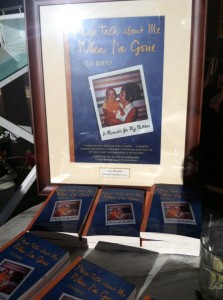Let me tell you a story.
Last week, Jason Herskowitz joined me for a Google Hangout, and we discussed the rapidly changing music industry. The issue at hand was whether streamed services are saviors or disruptors as they relate to the evolution of music in particular and content in general. In my opinion, they are a bit of both, but practically every innovation in each industry has been. Furthermore, I suspect history will look more favorably on these services than we might imagine today.
In my role as an analyst for CEA I’ve followed the developments of this shifting landscape with keen professional as well as personal interest. During the last decade advancements that, I maintain, benefit both artists and consumers, have all revolved around the democratization of content. What does that mean? In brief, it no longer requires archaic and expensive technologies and processes to make and acquire works of art.
As difficult as it might be for younger consumers to appreciate, the home audio business remained relatively uncomplicated for the better part of a century. The book publishing industry operated according to a fairly specific—and consistent—model for hundreds of years. Naturally the Internet came and changed everything. In the bad old days, gatekeepers held sway, overseeing the acquisition, creation and dissemination of content. These days, artists have the ability, and resulting channels, to create, distribute and promote their work.
Let me tell you my story.
I am old school enough to remember typewriters. More, I used them. More still, I took a class once that, in hindsight, was perhaps the most important—or at least most practical—one from my high school years. Flash forward through college (word processor), graduate school (a PC I could access only in a computer lab) to my first computer—a miracle with a printer that could produce dot matrix pages in sixty seconds, per page. Eventually I began writing for an online-only magazine, and finally created an obligatory blog. Then e-readers came along and eventually, tablets.
As an avid (if obsessive) reader and music aficionado, I have embraced each stage of progress as it relates to the ways content is made, purchased and utilized. These innovations have inexorably made it easier and more affordable to engage with our world; indeed they have opened up or created entirely new worlds. Throw in the marketing miracles inherent in social media and the people—not the self-appointed or well-connected tastemakers—are now the arbiters of what matters and what is relevant. This is a very good thing.
In my capacity as a music critic, I used to receive the occasional (now, more frequent) request from musicians, asking me to consider their work. Initially, they would offer to send a self-produced CD; these days they’ll lead me to their website, where sample files are accessible. To take one notable example, jazz guitarist Aram Bajakian contacted me a few years back, hoping I would listen to the album he had just made for John Zorn’s independent label Tzadik—haven for an ever-growing stable of talented but outside the so-called mainstream musicians. It turned out to be one of my favorite releases of the year. (Check out my review, HERE.)
This event, not unique, represented an epiphany of sorts. It occurred to me that Bajakian’s debut may never have had a fair chance ten or even five years ago. Of course, stories like this are becoming the new normal: despite what myopic naysayers stuck in the past insist, there is more incredible art being made today than most of us could hope to keep up with. As usual, the only ones lamenting these developments are the same sorts who always resist or stifle progress. These are the same folks who benefited, unfairly, from the rigged rules of the antiquated, imbalanced system.
Flash forward to 2013: I am releasing my first book this month, deciding, like so many musicians and, recently, writers, to go the independent route. Along the way, I’ve collected more rejection letters than I could count, but I’ve also seen the 20th century SOP steadily disappear as an unhappy memory. Today, just about anyone can publish a book, and a lot of people are trying. Does this potentially flood the market with inferior product? Certainly. Does it also ensure that more writers (and musicians, and movie makers) have the opportunity to be heard and discovered? Without doubt.
The good news: with sufficient ability, awareness and time, anyone can publish without paying for it or surviving the scrutiny of hit-seeking middlemen. The bad news: as liberating as this new DIY ethos is, the onus is now entirely on the artist. As such, I necessarily became acquainted with the nuts and bolts of creating a book, from legal pad to Amazon. Suffice it to say, this demands a proficiency at production, distribution and marketing.
The bottom line? This process represents the very essence of innovation, in actual practice. If you want it done, do it yourself. If you want it done well, understand and learn all the things you do not know. In halcyon times, writing a book was itself the hard part, and pretty much the only thing an author controlled. Too many authors had to hope that their publisher could generate sufficient interest, garner reviews, set up a book tour, etc. If that didn’t happen, there were few options other than luck or a miraculous endorsement from Oprah.
Today, even taking the independent route will cost you money (unless you happen to be a book designer, website builder and professional editor). On the other hand, it cost you money back in the day, as well: those advances given to authors were typically contingent upon future sales and the cost of assembly, editing and distribution were factored in on the front-end. I worked with the appropriate people, and worked on my game-plan with every spare second I could afford. Without a publisher or promoter I secured my own blurbs and booked my own reading events. As this book comes into the world, I have no one to answer to but myself. It’s beyond what I could have imagined, and just the way I would have imagined it, in some implausible future.
That future is real and it is now; in fact, milestones being made this moment will already be surpassed tomorrow. In the past I celebrated certain advancements from the sidelines, in solidarity. As I watch, and experience, the empowering mechanisms of innovation create previously unimaginable opportunities, I understand it’s now also the story of my life.
More about the memoir and how to acquire it, HERE.


